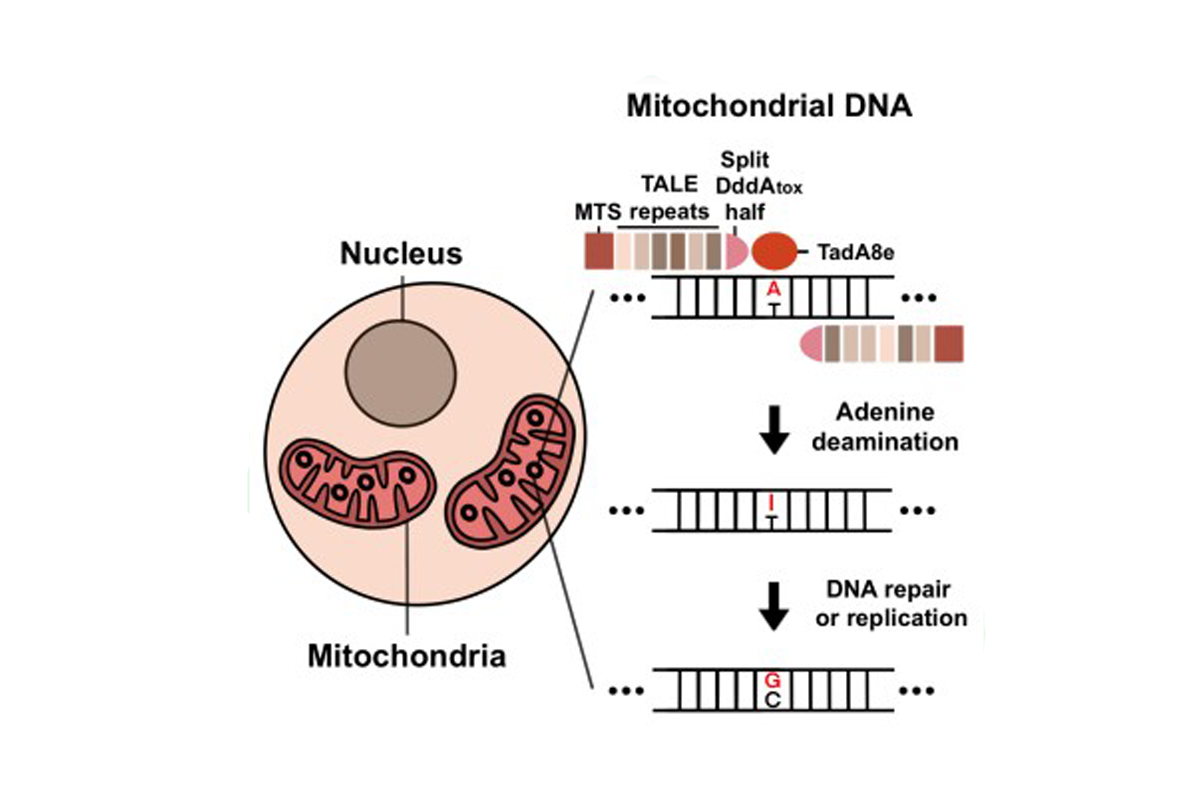
Gene Editing Tool Enables A to G Base Conversion in the Mitochondria
April 27, 2022| |
Institute for Basic Science (IBS) and Seoul National University researchers developed a gene editing tool than can precisely interchange adenine (A) with guanine (G) within the mitochondrial genome. This breakthrough, reported in the Cell journal, has the potential to expand the range of mitochondrial mutations that can help cure human genetic diseases.
“We were able to create a novel gene-editing platform called TALED that can achieve A-to-G conversion. Our new base editor dramatically expanded the scope of mitochondrial genome editing. This can make a big contribution not only to making a disease model but also to developing a treatment,” said first author Cho Sung-Ik. They developed TALED by fusing three different components. The first one is a transcription activator-like effector (TALE), which can target a DNA sequence. The second one is called TadA8e, an adenine deaminase that enables the A-to-G conversion. The third component, DddAtox, is a cytosine deaminase that makes the DNA more accessible to TadA8e.
The next step in the study is to enhance editing efficiency and specificity of TALED to enable correction of disease-causing mtDNA mutations in embryos, fetuses, newborns, or adult patients.
Get more information from IBS, Daily Beast, and Cell.
| |
You might also like:
- Pocket K No. 59: Plant Breeding Innovation: TALENs
- Scientists Finally Record Successful Mitochondrial DNA Editing in Plants
- MitoTALENs Reveal Role of Mitochondrial Gene in Rice Pollen Development
Biotech Updates is a weekly newsletter of ISAAA, a not-for-profit organization. It is distributed for free to over 22,000 subscribers worldwide to inform them about the key developments in biosciences, especially in biotechnology. Your support will help us in our mission to feed the world with knowledge. You can help by donating as little as $10.
-
See more articles:
-
News from Around the World
- Scientists Resurrect Ancient Rubisco to Improve Photosynthesis
- Protein Discovery Reveals How Fungi Bypasses Plant Defenses
- ARS Scientists to Make Salads Healthier
- MIT Scientists Seek to Develop Self-fertilizing Crops, Combat Climate Change
- Biotechnology and Regulation in the Philippines
-
Research Highlights
- GE Poplar Trees Help Fight Climate Change
-
Plant
- Belgium Grants Permits for New Field Trials of 3 Genome-Edited Maize
- Gene Editing Tool Enables A to G Base Conversion in the Mitochondria
-
Read the latest: - Biotech Updates (December 10, 2025)
- Gene Editing Supplement (November 26, 2025)
- Gene Drive Supplement (February 22, 2023)
-
Subscribe to BU: - Share
- Tweet

